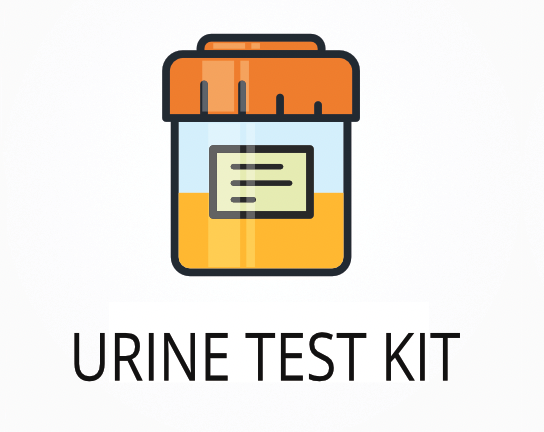Ordering the Organix Organic Acid Test | Europe
The Organix Organic Acid Test by Genova Diagnostics helps identify imbalances in metabolism, nutrient absorption, and gut health by measuring organic acid markers in urine. This test can reveal patterns related to energy production, neurotransmitter function, and detoxification, which may be linked to symptoms like fatigue, mood swings, and digestive discomfort. Interestingly, this test can also detect byproducts from certain bacteria and yeast, providing a broader view of gut and metabolic health.
Ordering this test can help you:
- Pinpoint nutrient deficiencies, such as B vitamins, that may affect energy and focus
- Identify imbalances in neurotransmitters linked to mood and mental clarity
- Detect markers of oxidative stress and inflammation that may impact skin and immune function
- Assess detoxification pathways to support liver and metabolic function
- Reveal hidden gut microbial imbalances, including yeast and bacteria overgrowth
Who Should Consider Metabolic and Organic Acid Testing
People who experience ongoing tiredness, trouble concentrating, or frequent digestive issues may benefit from this test. For example, someone who feels mentally foggy and struggles with low energy despite eating well and sleeping enough might find answers through this type of testing.
Ordering this test may also be helpful if you:
- Have unexplained mood changes or anxiety that do not improve with lifestyle changes
- Notice skin problems or rashes that persist despite trying different remedies
- Experience sleep disturbances or trouble staying asleep
- Struggle with weight management even with regular exercise and balanced meals
- Have a family history of metabolic or mitochondrial conditions, which can sometimes show up as subtle symptoms
Testing for organic acids can help identify specific metabolic blocks, nutrient gaps, or gut imbalances that may be missed by standard blood tests. Delaying this test could mean missing early signs of metabolic or gut issues that are easier to address when caught sooner.
Preparing for Urine Organic Acid and Metabolic Marker Testing
Fasting is not required for this test, but it is best to collect the first morning urine sample for the most consistent results. Always follow any instructions your doctor or healthcare provider gives you to make sure your sample is collected and shipped correctly.
Labs Included When Ordering Your Organix® Test | Europe
| Test Name / Section | Reference Range | Significance | Low and High Levels of Organix® Test | Europe |
|---|---|---|---|
| Fatty Acid Metabolism | |||
| Adipate | 0.00–0.07 | Adipate is a marker for how well the body breaks down fats. It can show if there are problems with fat digestion or energy use. | High levels mean fat breakdown is not working well, possibly due to low carnitine or digestive issues.
Low levels mean normal fat metabolism. |
| Suberate | 0.00–0.13 | Suberate helps show if the body is using fats for energy. It can also point to carnitine deficiency or mitochondrial problems. | High levels mean possible carnitine deficiency or issues with energy production.
Low levels mean normal fat metabolism. |
| Ethylmalonate | 0.00–0.13 | Ethylmalonate is linked to how the body processes certain fats. It can show problems with energy use or rare metabolic conditions. | High levels mean possible issues with fat metabolism or rare enzyme problems.
Low levels mean normal fat breakdown. |
| Carbohydrate Metabolism | |||
| L-Lactate | 0.00–0.44 | L-Lactate shows how well the body turns sugar into energy. It can rise with low oxygen, poor circulation, or metabolic stress. | High levels mean possible low oxygen, poor circulation, or metabolic stress.
Low levels mean normal sugar metabolism. |
| Pyruvate | 0.00–0.08 | Pyruvate is a key step in turning food into energy. It can show if there are blocks in energy production pathways. | High levels mean possible block in energy production or vitamin B1 deficiency.
Low levels mean normal energy conversion. |
| Beta-Hydroxybutyrate | 0.00–0.20 | Beta-Hydroxybutyrate is a ketone body, showing how the body uses fat for energy, especially during fasting or low-carb diets. | High levels mean increased fat burning or possible diabetes.
Low levels mean low fat breakdown or high carbohydrate intake. |
| Energy Production | |||
| Citrate | 0.00–0.36 | Citrate is part of the citric acid cycle, which is the main way the body makes energy from food. | High levels mean possible block in energy cycle or high cell turnover.
Low levels mean low energy production or poor nutrient intake. |
| cis-Aconitate | 0.00–0.13 | cis-Aconitate is another step in the energy cycle, helping to show if the body is making energy efficiently. | High levels mean possible block in the energy cycle.
Low levels mean normal energy production. |
| Fumarate | 0.00–0.08 | Fumarate is a marker for the citric acid cycle, showing how well the body is making energy from food. | High levels mean possible block in energy production.
Low levels mean normal energy metabolism. |
| Isocitrate | 0.00–0.13 | Isocitrate is another step in the energy cycle, helping to show if the body is making energy efficiently. | High levels mean possible block in the energy cycle.
Low levels mean normal energy production. |
| Alpha-Ketoglutarate | 0.00–0.36 | Alpha-Ketoglutarate is important for both energy production and detoxification. It can show if there are blocks in these pathways. | High levels mean possible block in energy or detox pathways.
Low levels mean normal metabolism. |
| Succinate | 0.00–0.13 | Succinate is a key step in the energy cycle, showing how well the body is making energy from food. | High levels mean possible block in energy production or B vitamin deficiency.
Low levels mean normal energy metabolism. |
| Malate | 0.00–0.13 | Malate is another marker for the citric acid cycle, showing how well the body is making energy from food. | High levels mean possible block in energy production.
Low levels mean normal metabolism. |
| Hydroxymethylglutarate | 0.00–0.13 | Hydroxymethylglutarate is involved in making cholesterol and energy. It can show if there are problems with these pathways. | High levels mean possible block in cholesterol or energy production.
Low levels mean normal metabolism. |
| B Vitamin Markers | |||
| Alpha-Ketoisovalerate | 0.00–0.13 | Alpha-Ketoisovalerate shows how well the body breaks down certain amino acids and can point to B vitamin needs. | High levels mean possible B vitamin deficiency or amino acid metabolism issues.
Low levels mean normal amino acid breakdown. |
| Beta-Hydroxyisovalerate | 0.00–0.13 | Beta-Hydroxyisovalerate is a marker for biotin (vitamin B7) status and amino acid metabolism. | High levels mean possible biotin deficiency.
Low levels mean normal biotin status. |
| Alpha-Ketoisocaproate | 0.00–0.13 | Alpha-Ketoisocaproate helps show if the body is breaking down certain amino acids properly, which can be affected by B vitamins. | High levels mean possible B vitamin deficiency or amino acid metabolism issues.
Low levels mean normal amino acid breakdown. |
| Alpha-Keto-Beta-Methylvalerate | 0.00–0.13 | Alpha-Keto-Beta-Methylvalerate is another marker for amino acid breakdown and B vitamin needs. | High levels mean possible B vitamin deficiency.
Low levels mean normal metabolism. |
| Xanthurenate | 0.00–0.13 | Xanthurenate is a marker for vitamin B6 status and tryptophan metabolism, which can affect mood and brain function. | High levels mean possible vitamin B6 deficiency.
Low levels mean normal B6 status. |
| Methylation Markers | |||
| Methylmalonate | 0.00–0.40 | Methylmalonate is a marker for vitamin B12 status and methylation, which is important for energy and brain function. | High levels mean possible vitamin B12 deficiency.
Low levels mean normal B12 status. |
| Formiminoglutamate | 0.00–0.13 | Formiminoglutamate is a marker for folate (vitamin B9) status and methylation. | High levels mean possible folate deficiency.
Low levels mean normal folate status. |
| Neurotransmitter Metabolism | |||
| Vanilmandelate | 0.00–6.00 | Vanilmandelate is a breakdown product of adrenaline and noradrenaline, showing how the body handles stress hormones. | High levels mean increased stress or adrenal activity.
Low levels mean low stress hormone production. |
| Quinolinate | 0.00–0.13 | Quinolinate is a marker for inflammation and brain health, linked to tryptophan metabolism. | High levels mean increased inflammation or brain stress.
Low levels mean normal tryptophan metabolism. |
| Homovanillate | 0.00–8.00 | Homovanillate is a breakdown product of dopamine, showing how the body processes this important brain chemical. | High levels mean increased dopamine breakdown.
Low levels mean low dopamine activity. |
| 5-hydroxyindoleacetate | 0.00–8.00 | 5-hydroxyindoleacetate is a breakdown product of serotonin, showing how the body processes this mood-related chemical. | High levels mean increased serotonin breakdown.
Low levels mean low serotonin activity. |
| Kynurenate | 0.00–0.13 | Kynurenate is a marker for tryptophan metabolism and brain health, linked to mood and inflammation. | High levels mean increased tryptophan breakdown or inflammation.
Low levels mean normal tryptophan metabolism. |
| Picolinate | 0.00–0.13 | Picolinate is another marker for tryptophan metabolism, which can affect mood and brain function. | High levels mean increased tryptophan breakdown.
Low levels mean normal metabolism. |
| Antioxidant Markers | |||
| p-Hydroxyphenyllactate | 0.00–0.13 | p-Hydroxyphenyllactate is a marker for antioxidant status and can show if there is oxidative stress in the body. | High levels mean increased oxidative stress.
Low levels mean normal antioxidant status. |
| 8-Hydroxy-2′-deoxyguanosine | 0.00–0.13 | 8-Hydroxy-2′-deoxyguanosine is a marker for DNA damage from oxidative stress, which can affect cell health. | High levels mean increased DNA damage from oxidative stress.
Low levels mean normal DNA protection. |
| Detoxification Indicators | |||
| 2-Methylhippurate | 0.00–0.13 | 2-Methylhippurate is a marker for detoxification, showing how the body handles certain chemicals and toxins. | High levels mean increased exposure to chemicals or detox stress.
Low levels mean normal detoxification. |
| Orotate | 0.00–0.13 | Orotate is involved in detoxification and making genetic material. It can show if there are blocks in these pathways. | High levels mean possible block in detox or DNA synthesis.
Low levels mean normal metabolism. |
| Glucarate | 0.00–0.13 | Glucarate is a marker for liver detoxification, showing how well the body removes toxins. | High levels mean increased detox activity.
Low levels mean low detoxification. |
| Alpha-Hydroxybutyrate | 0.00–0.13 | Alpha-Hydroxybutyrate is a marker for detoxification and can show if the body is under oxidative stress. | High levels mean increased oxidative stress or detox demand.
Low levels mean normal detoxification. |
| Pyroglutamate | 0.00–0.13 | Pyroglutamate is a marker for glutathione status, which is important for detoxification and antioxidant defense. | High levels mean possible glutathione depletion.
Low levels mean normal glutathione status. |
| Sulfate | 0.00–0.13 | Sulfate is a marker for detoxification, especially for removing certain chemicals and hormones. | High levels mean increased detox activity.
Low levels mean low detoxification. |
| Bacterial-General | |||
| Benzoate | 0.00–0.13 | Benzoate is a marker for gut bacteria activity and detoxification. | High levels mean increased gut bacteria activity or detox stress.
Low levels mean normal gut bacteria balance. |
| Hippurate | 0.00–0.13 | Hippurate is a marker for gut bacteria and detoxification, showing how the body processes certain foods and chemicals. | High levels mean increased gut bacteria activity or detox stress.
Low levels mean low gut bacteria activity. |
| Phenylacetate | 0.00–0.13 | Phenylacetate is a marker for gut bacteria and protein breakdown. | High levels mean increased protein breakdown or gut bacteria imbalance.
Low levels mean normal protein metabolism. |
| Phenylpropionate | 0.00–0.13 | Phenylpropionate is another marker for gut bacteria and protein breakdown. | High levels mean increased gut bacteria activity.
Low levels mean normal gut bacteria balance. |
| p-Hydroxybenzoate | 0.00–0.13 | p-Hydroxybenzoate is a marker for gut bacteria and detoxification. | High levels mean increased gut bacteria activity or detox stress.
Low levels mean normal gut bacteria balance. |
| p-Hydroxyphenylacetate | 0.00–0.13 | p-Hydroxyphenylacetate is a marker for gut bacteria and protein breakdown. | High levels mean increased gut bacteria activity.
Low levels mean normal gut bacteria balance. |
| Indican | 0.00–0.13 | Indican is a marker for protein breakdown by gut bacteria, which can show if there is bacterial overgrowth. | High levels mean possible bacterial overgrowth.
Low levels mean normal gut bacteria balance. |
| Tricarballylate | 0.00–0.13 | Tricarballylate is a marker for gut bacteria and can show if there is an imbalance in the gut. | High levels mean possible gut bacteria imbalance.
Low levels mean normal gut bacteria balance. |
| L. Acidophilus (Probiotic) | |||
| D-Lactate | 0.00–0.13 | D-Lactate is a marker for probiotic activity and gut health, showing if there is an overgrowth of certain bacteria. | High levels mean possible bacterial overgrowth.
Low levels mean normal probiotic balance. |
| Clostridial Species | |||
| 3,4 Dihydroxyphenylpropionate | 0.00–0.13 | 3,4 Dihydroxyphenylpropionate is a marker for certain gut bacteria, especially Clostridia species. | High levels mean possible Clostridia overgrowth.
Low levels mean normal gut bacteria balance. |
| Yeast/Fungal | |||
| D-Arabinitol | 0.00–0.13 | D-Arabinitol is a marker for yeast or fungal overgrowth in the gut. | High levels mean possible yeast or fungal overgrowth.
Low levels mean normal yeast balance. |
| Creatinine | 0.30–3.00 | Creatinine is used to correct for urine concentration and is not a marker for disease in this test. | High levels mean concentrated urine.
Low levels mean diluted urine. |
Reference ranges may change slightly as labs update their methods and standards. Always check your report for the most current values.
Organix Organic Acid Test | Europe FAQ
Is there Organix Organic Acid Test | Europe testing near me?
This is a home urine test kit, so you can collect your sample at home and send it to the lab using the included shipping materials. If you have symptoms like ongoing fatigue or brain fog, being able to collect your sample locally makes it easier to get answers without needing to travel or wait for an appointment.
How do I interpret the test results?
While your treating physician should help you interpret your results, you can also use our one-on-one test results review service with our clinical team for a detailed explanation and next steps.
What is the cost of the test?
The price you see includes standard shipping to your address and return shipping to the lab, but local draw fees may apply. Ordering this test can help you find out if metabolic imbalances are slowing your recovery, so you can address them sooner.
How often should I retest?
Retesting is usually recommended every 6 to 12 months, especially if you are making changes to your diet, supplements, or treatment plan, so you can track improvements in nutrient status and metabolism.
How accurate is the test?
This test uses advanced mass spectrometry and gas chromatography to measure organic acids in urine, with a specificity of 98% and sensitivity of 97%. TrueHealthLabs.com partners with CLIA-certified and CAP-certified laboratories to uphold rigorous testing standards for dependable results.
Important Notes
This Organix® test is available for European customers only. See Organix® for USA
Medical Review Board
Reviewed by Jeff Donohue M.D. from Body Logic and Brady Hurst DC, CCCN. Written by True Health Lab’s team of editorial health contributors.
Disclaimer: This information is for educational purposes only and not intended as medical advice. Consult your healthcare provider for personalized guidance.
Why Customers Trust True Health Labs - What People are saying
Also rated 4.6 out of 5 based on 3452 ShopperApproved reviews- See all TrueHealthLabs.com reviews.









